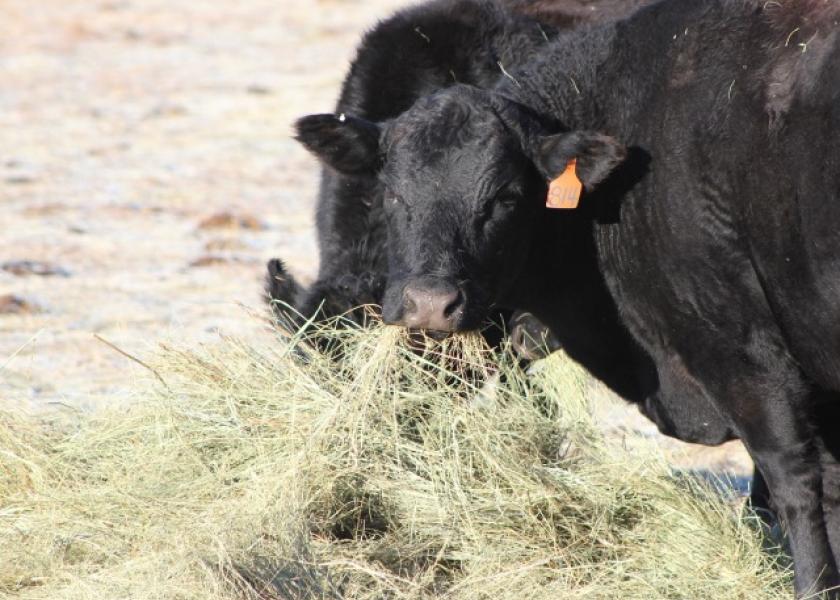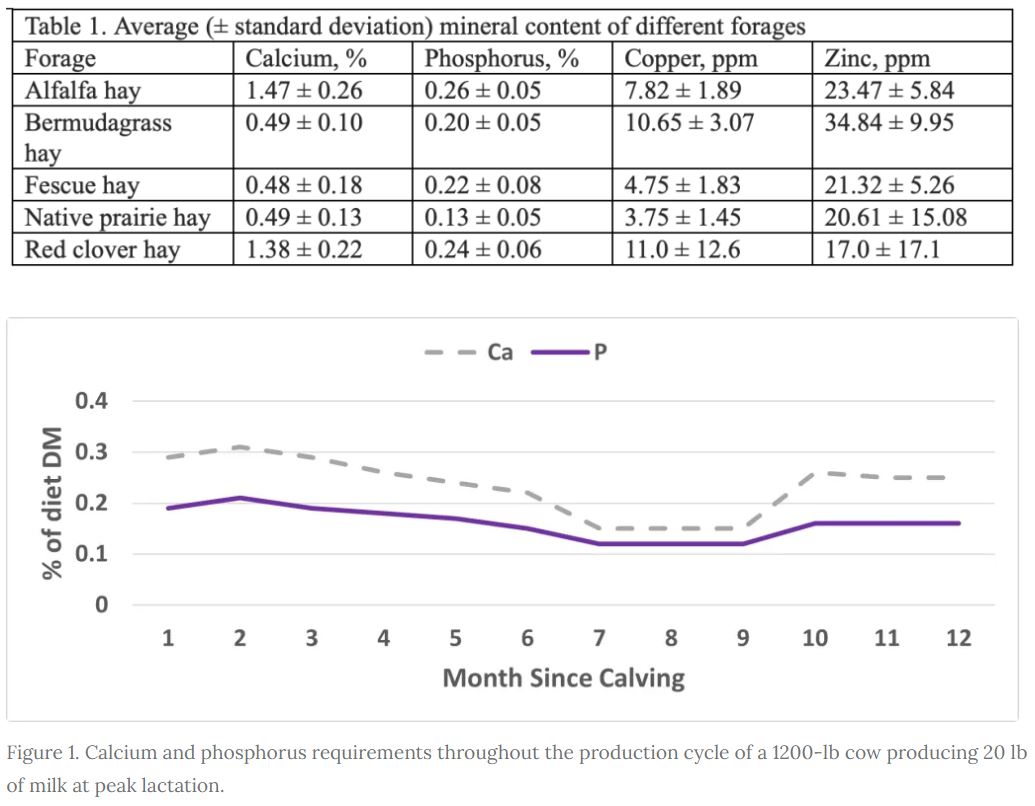Check for Adequate Mineral Supplementation with Drought Stressed Forages

Feeding cows through the winter after a drought season is always challenging, and mineral nutrition is no different. Feeding alternative forages means feeding something different than what you are used to feeding, which means alternative supplementation strategies. Forages differ in their mineral content with legumes typically having greater amounts of calcium than grasses (Table 1). Additionally, some forages have lower content of microminerals as can be seen for copper content of fescue and native prairie hay.
The mineral content of forages is affected by several factors with soil fertility being a primary factor. Mineral content of the forage can only be as good as the mineral content of the soil and the physical and chemical properties of the soil that allow the plant to absorb the mineral into roots. Soil pH is an important chemical property affecting mineral availability to the plant where acidic soils can negatively affect absorption of calcium, phosphorus, and magnesium. However, alkaline soils negatively affect absorption of manganese, copper, and zinc. The proportions of sand, silt, and clay physically affects mineral absorption where minerals can be tightly bound to clay particles reducing the availability to plants, and high sand content reduces water holding capacity thereby reducing the availability to plants.
With drought over much of the country last summer, the mineral content of forages, even if the same hay fields that are always used, is likely different than normal. In legume-grass mixtures, the legumes are generally more drought tolerant than grasses and so the relative production of forage is likely more legume during drought years. Additionally, the drier soil reduces availability of minerals for absorption by the plant, especially phosphorus. Phosphorus in the form of phosphate needs to be solubilized before absorption by plant roots. Thus, phosphorus is an important mineral that may be low in drought-stressed forages.
As spring calving season gets underway, calcium and phosphorus requirements of lactating cows is greater than dry, gestating cows (Figure 1), and depends upon the amount of milk production. Higher milking cows require more calcium and phosphorus. A 1200-lb cow producing 10 lb of milk at peak lactation requires a diet with 0.25 and 0.17% calcium and phosphorus in the diet in early lactation, whereas a cow producing 20 lb of milk at peak lactation requires 0.31 and 0.21% calcium and phosphorus in the diet.
Feeding drought-stressed forages could result in mineral imbalances unless mineral supplementation is adjusted. With increasing mineral requirements, especially for calcium and phosphorus, as cows begin to calve, the likelihood of mineral imbalances increases and could cause some health and reproductive problems. Evaluating the mineral content of your forage resources and mineral supplementation plan is an important step in a drought year.








